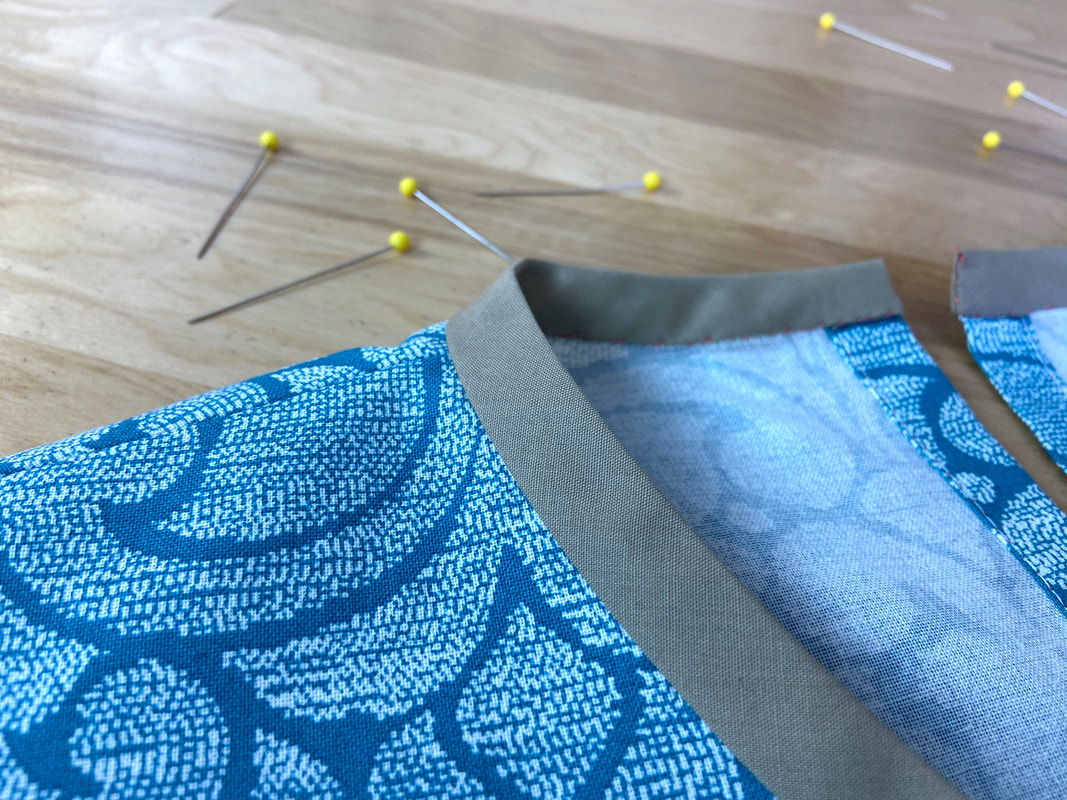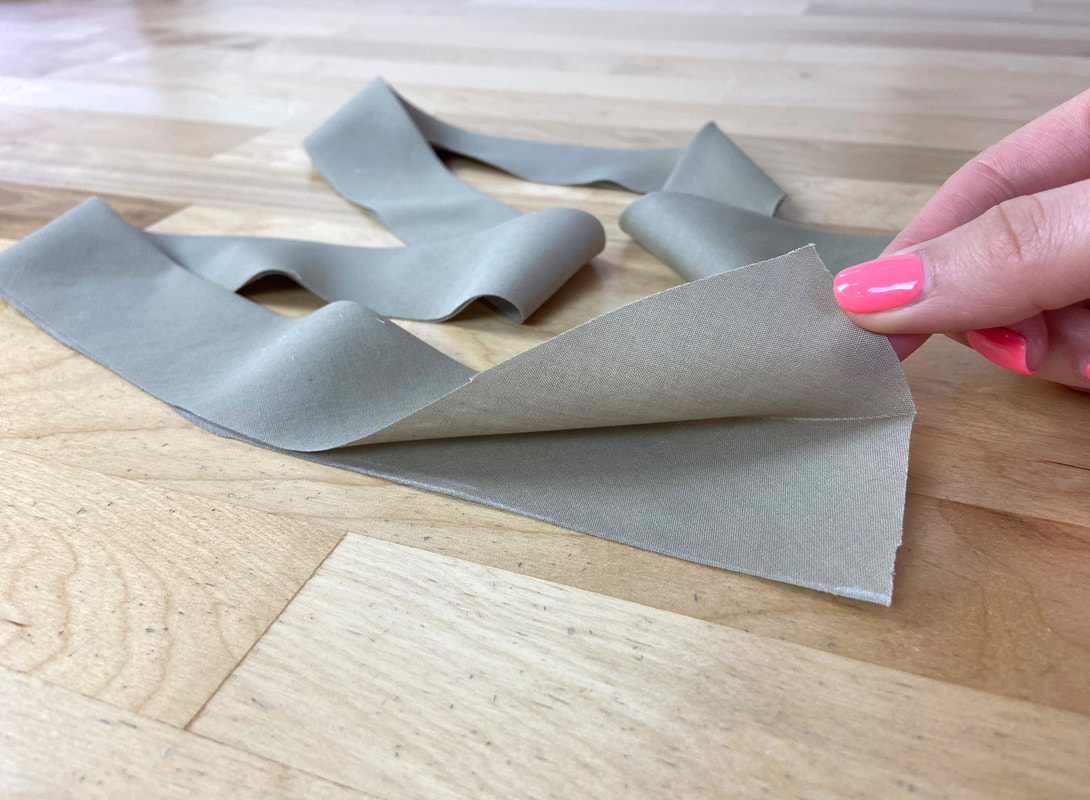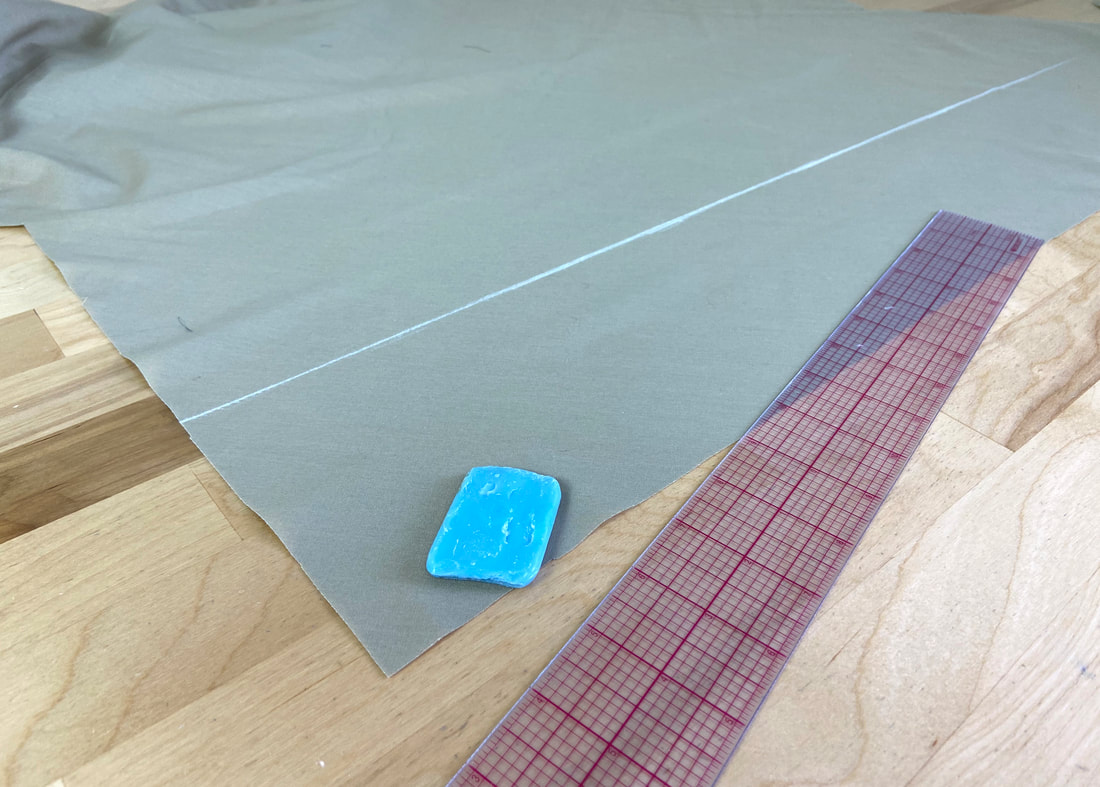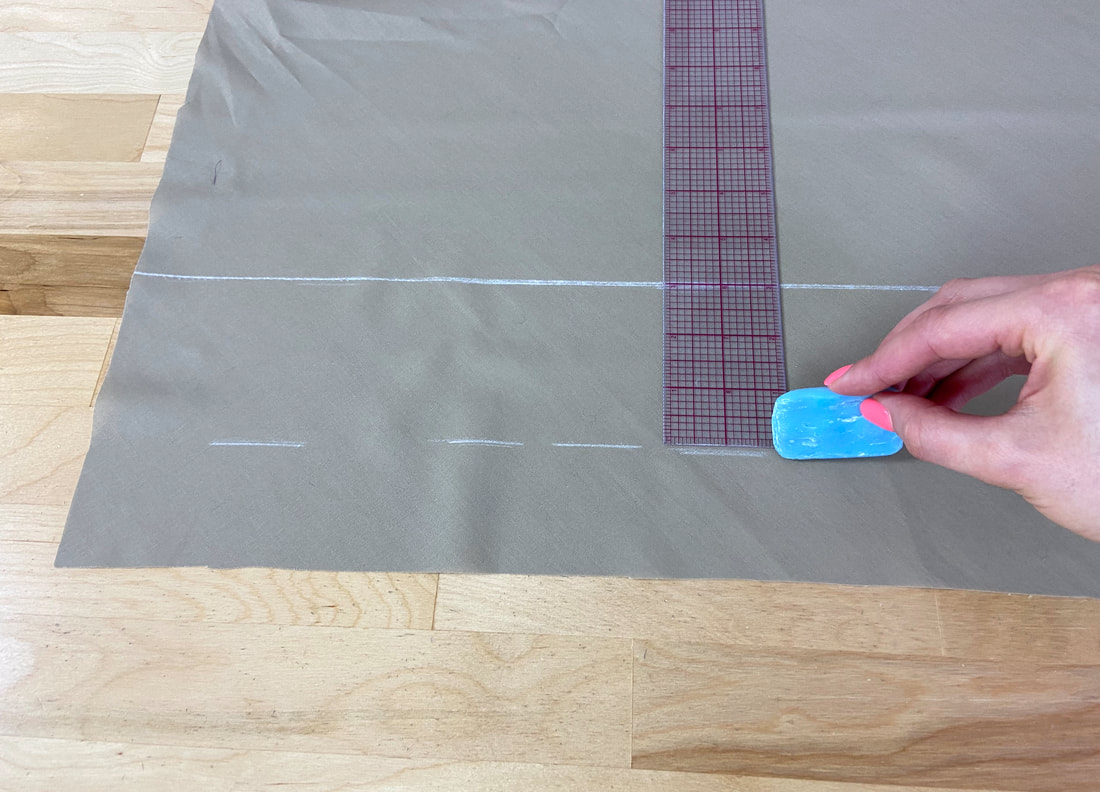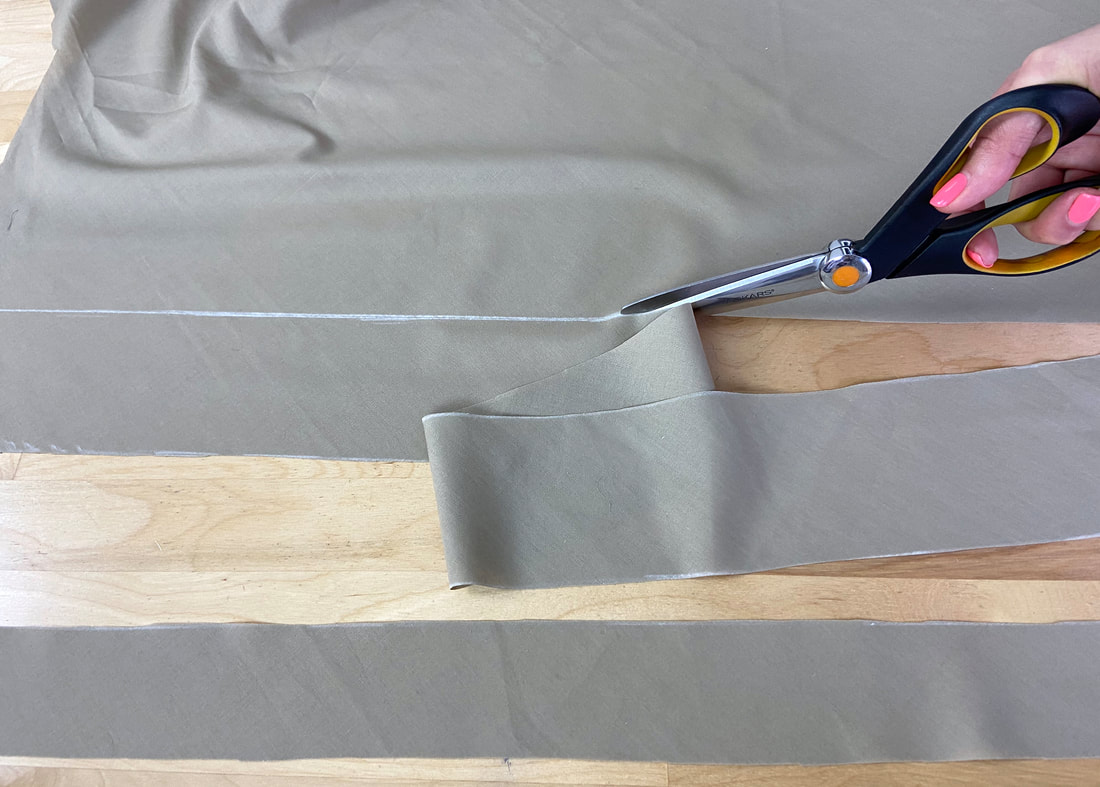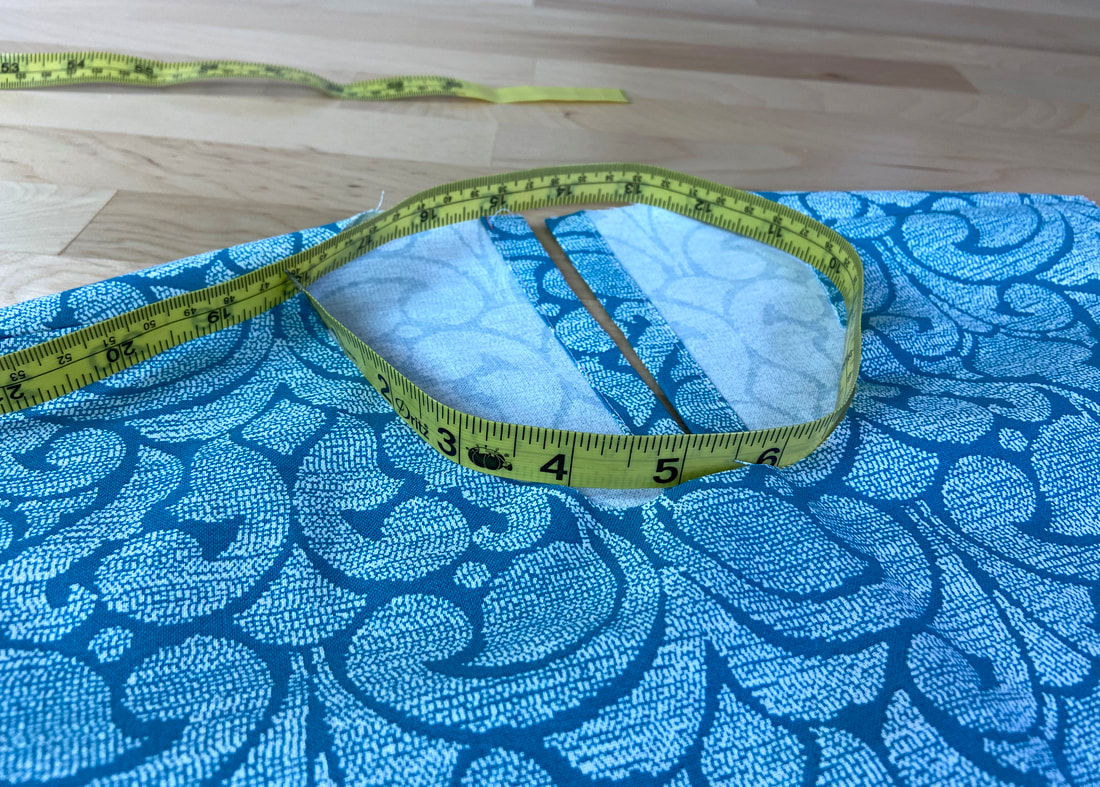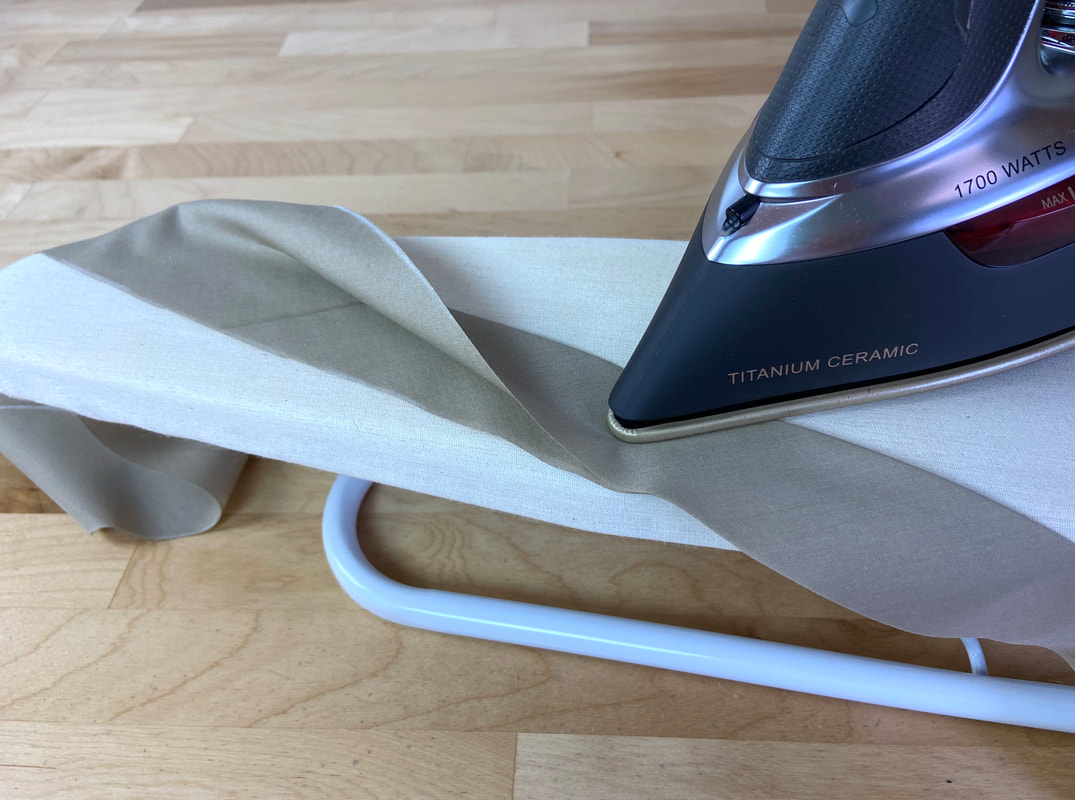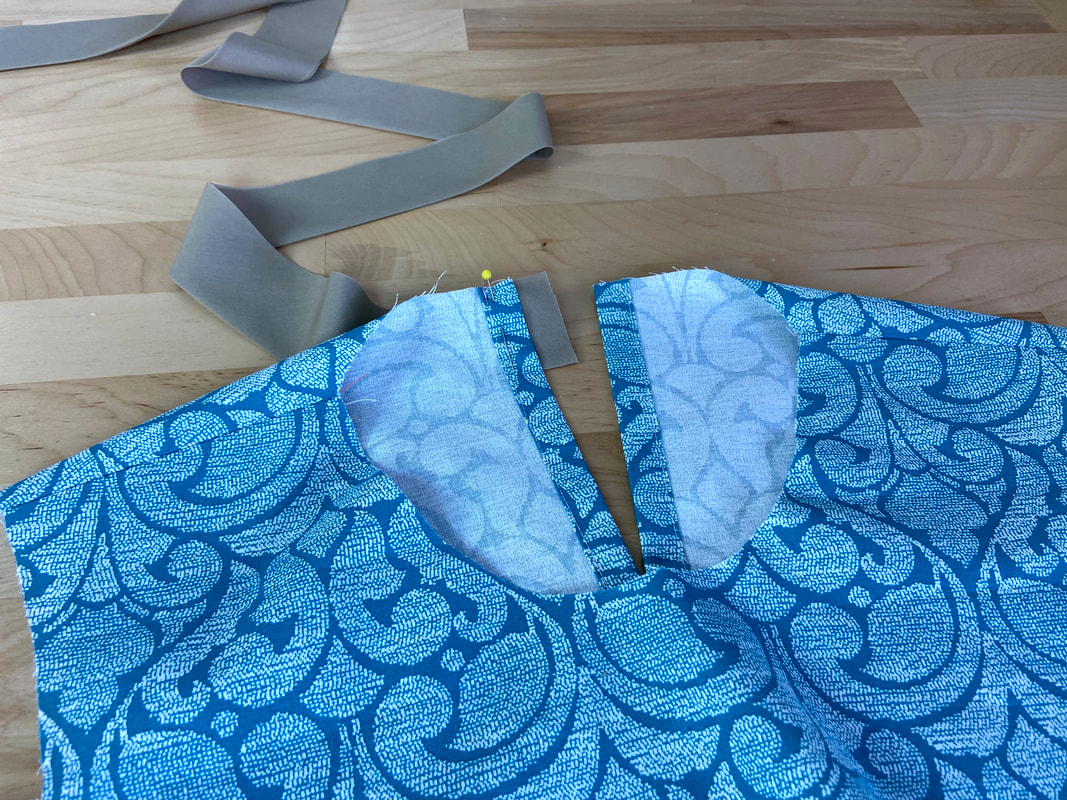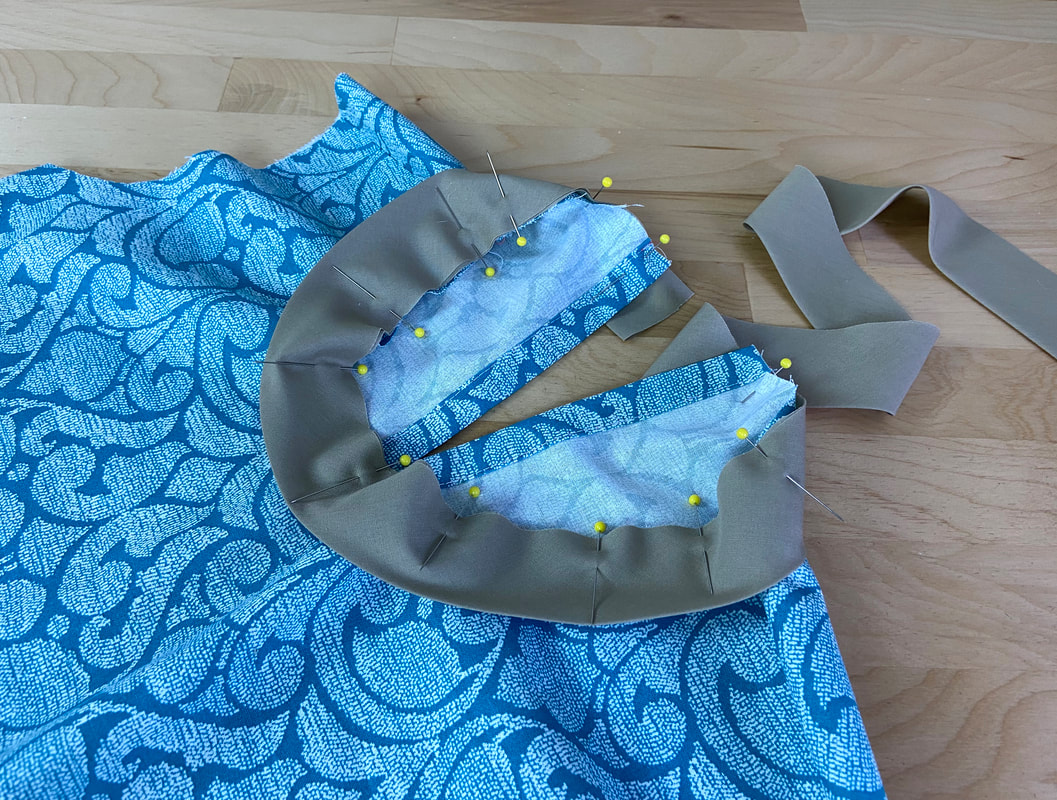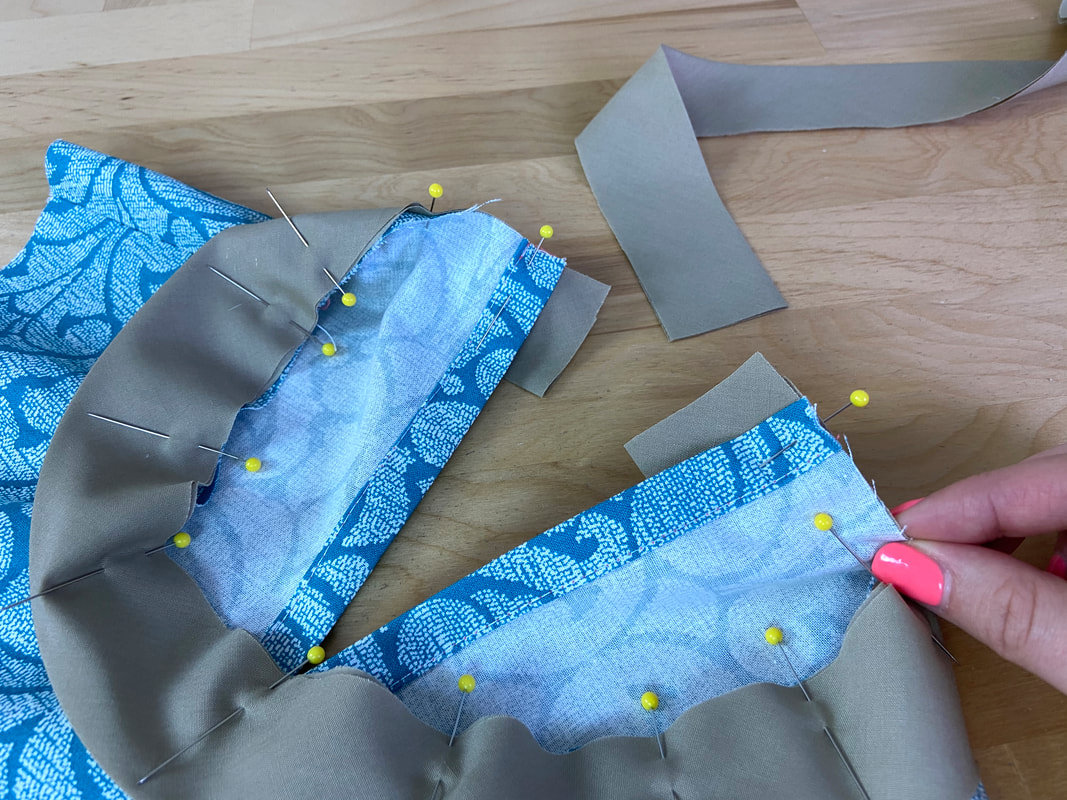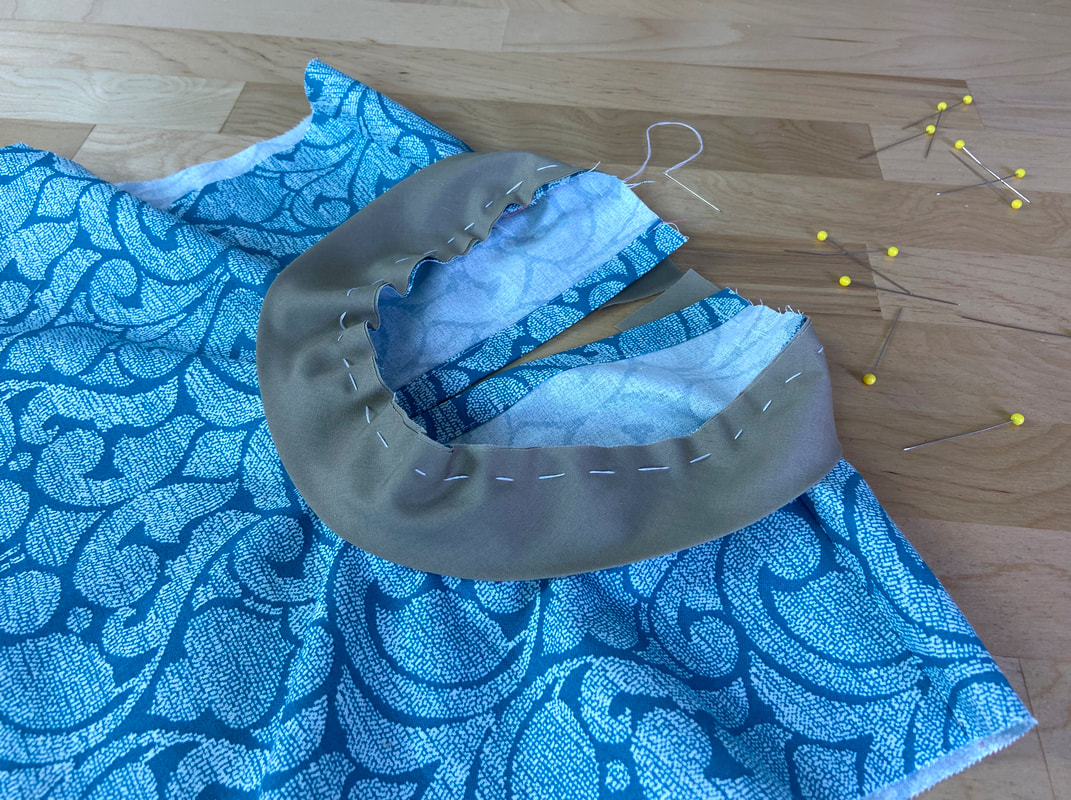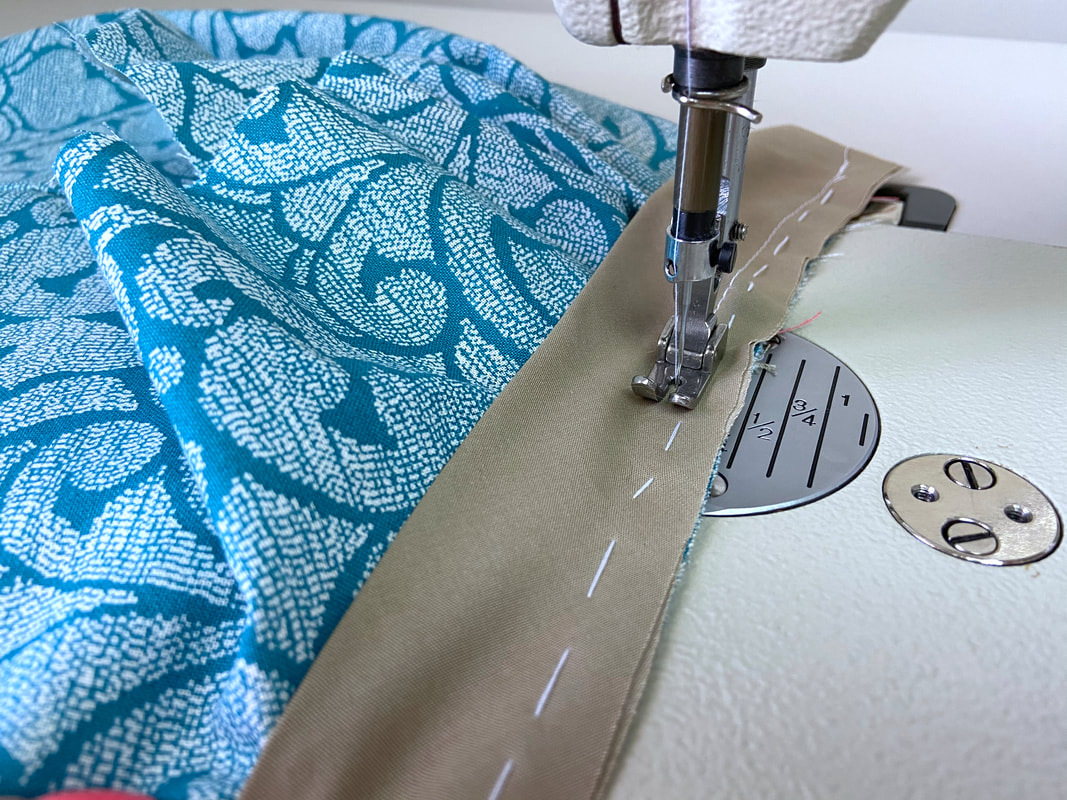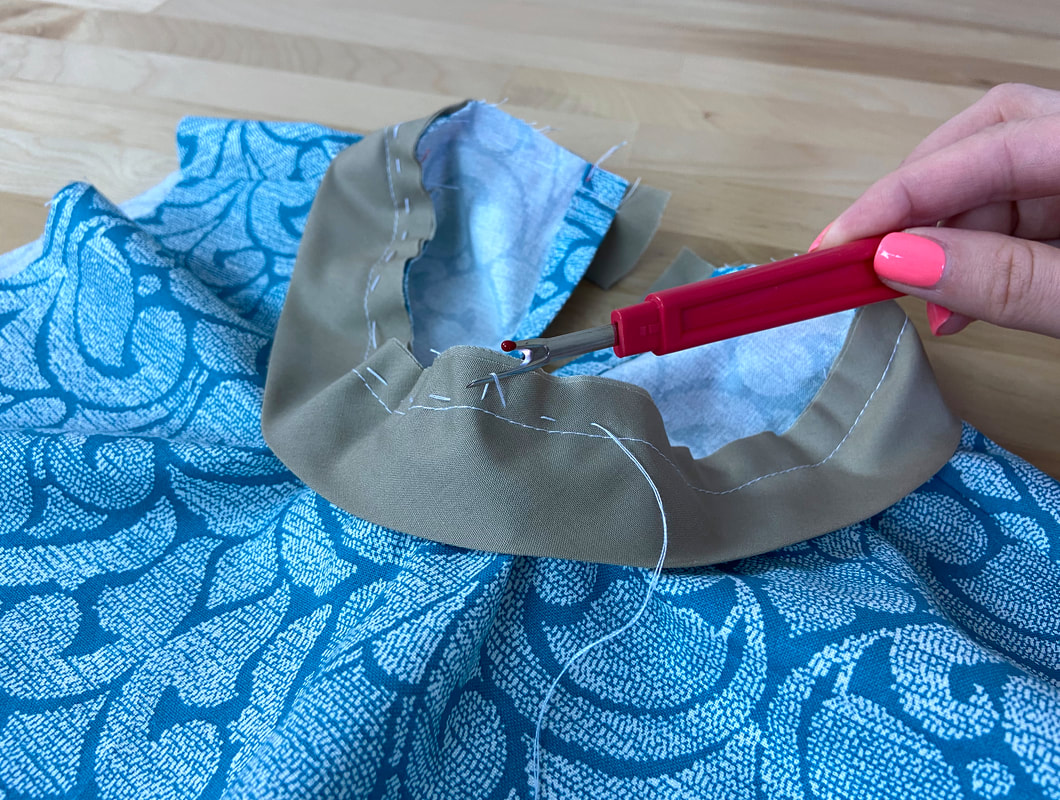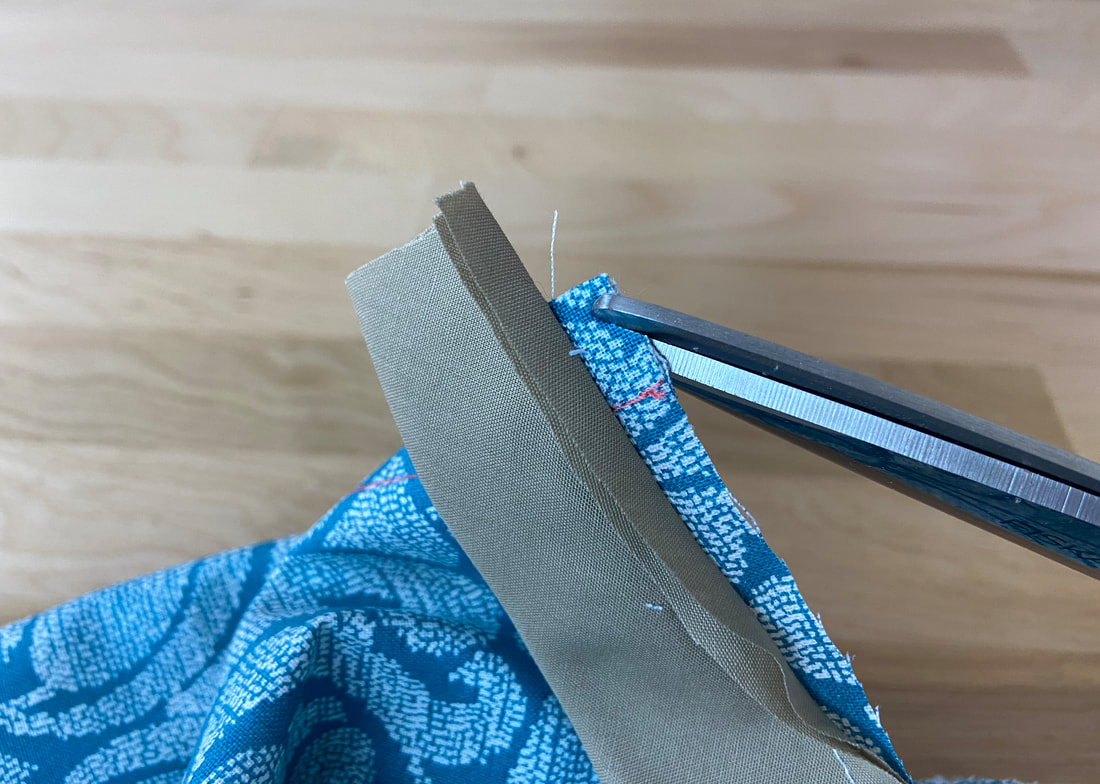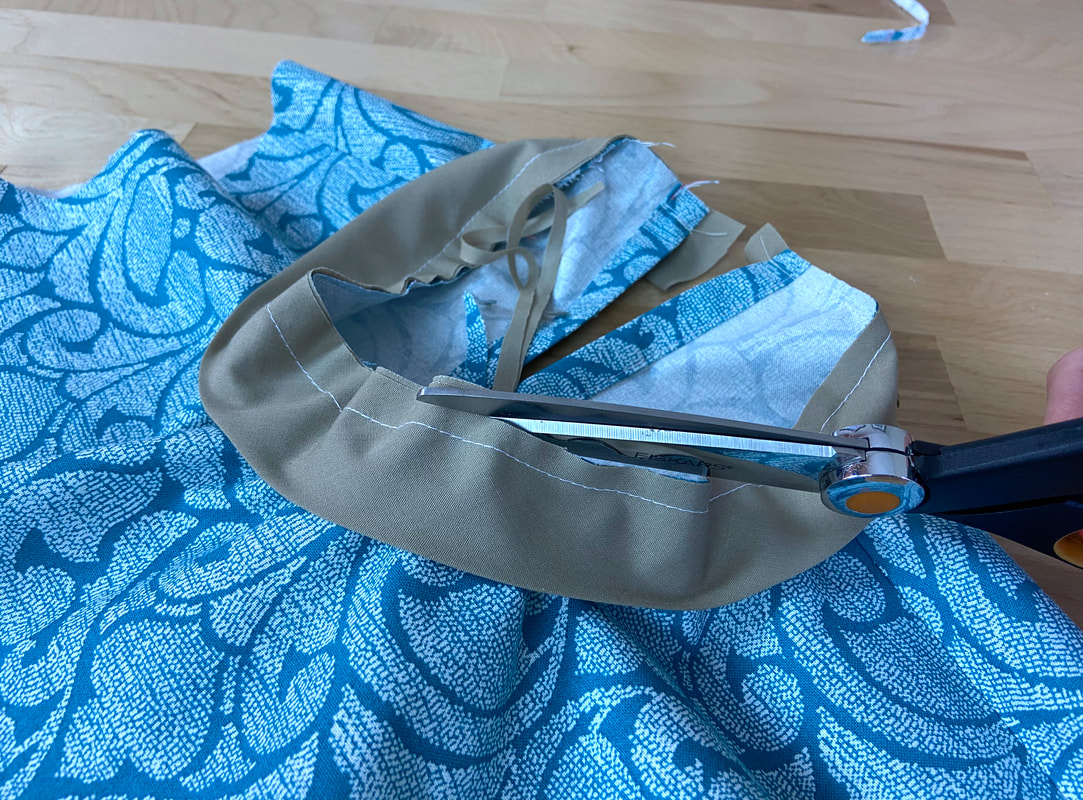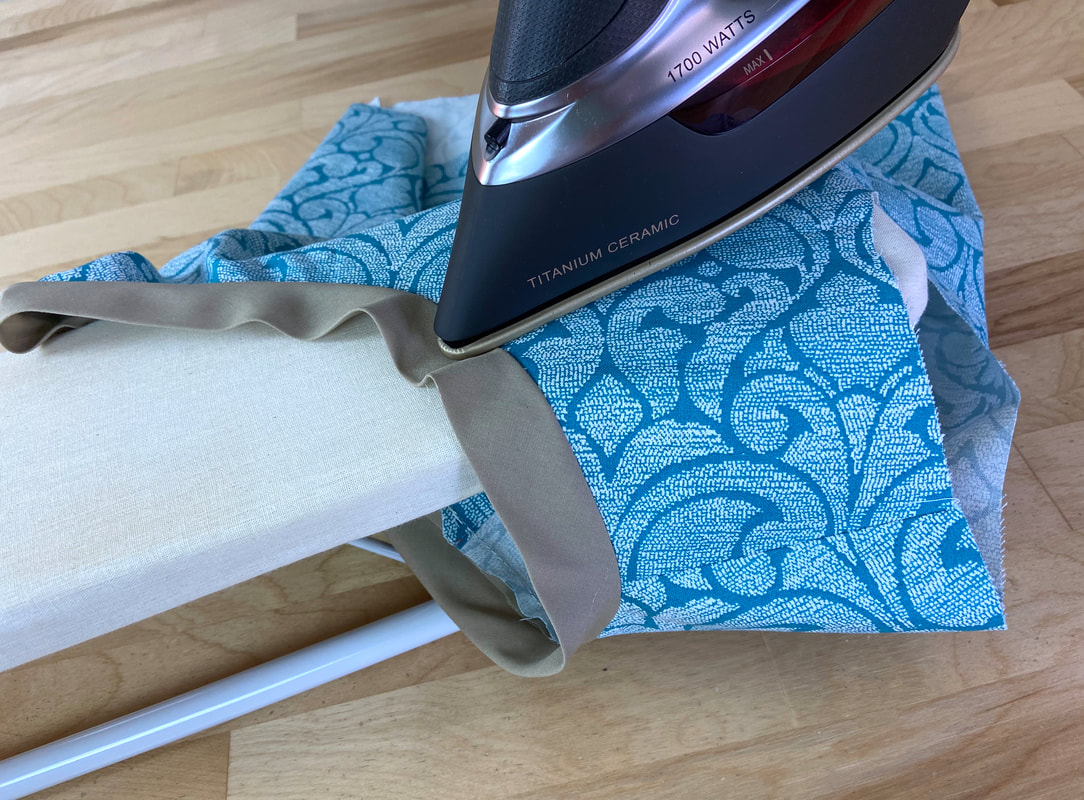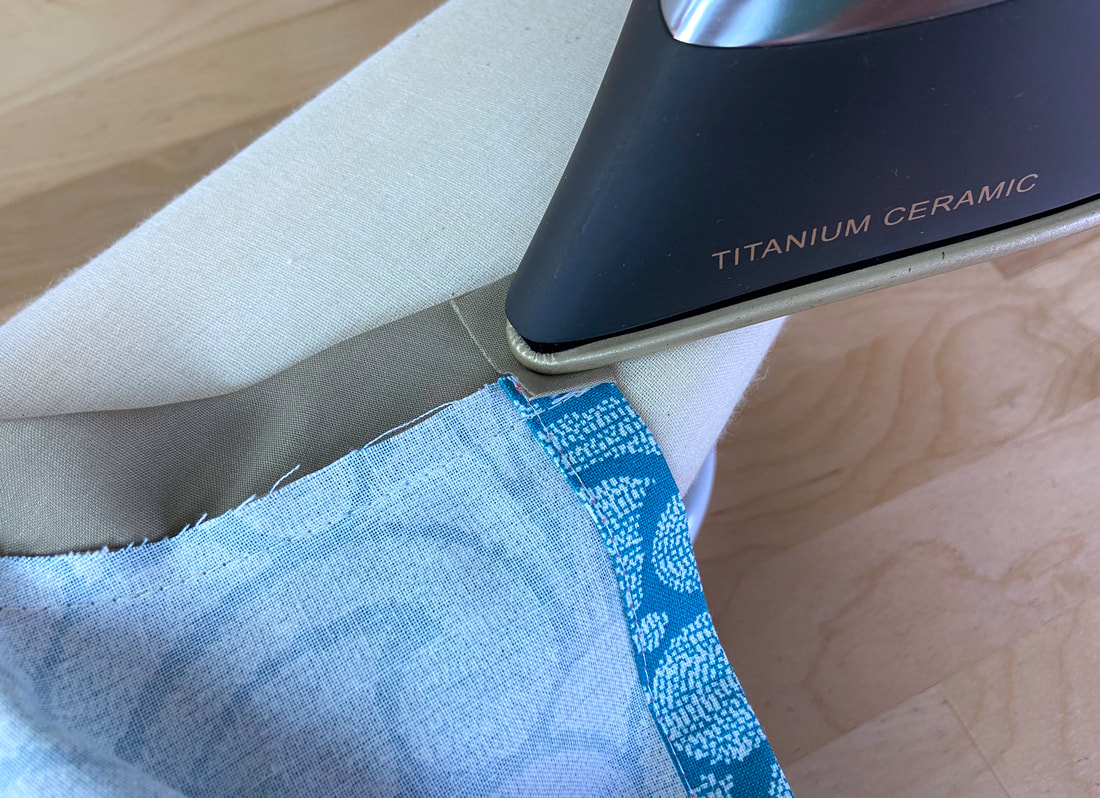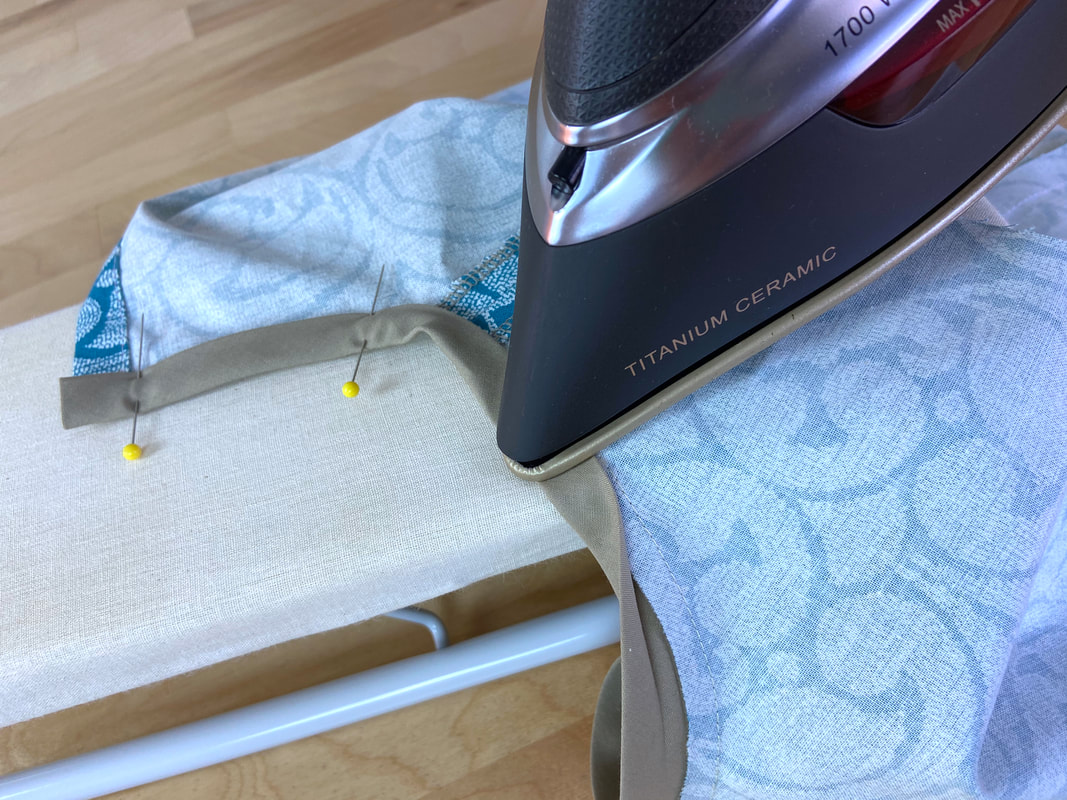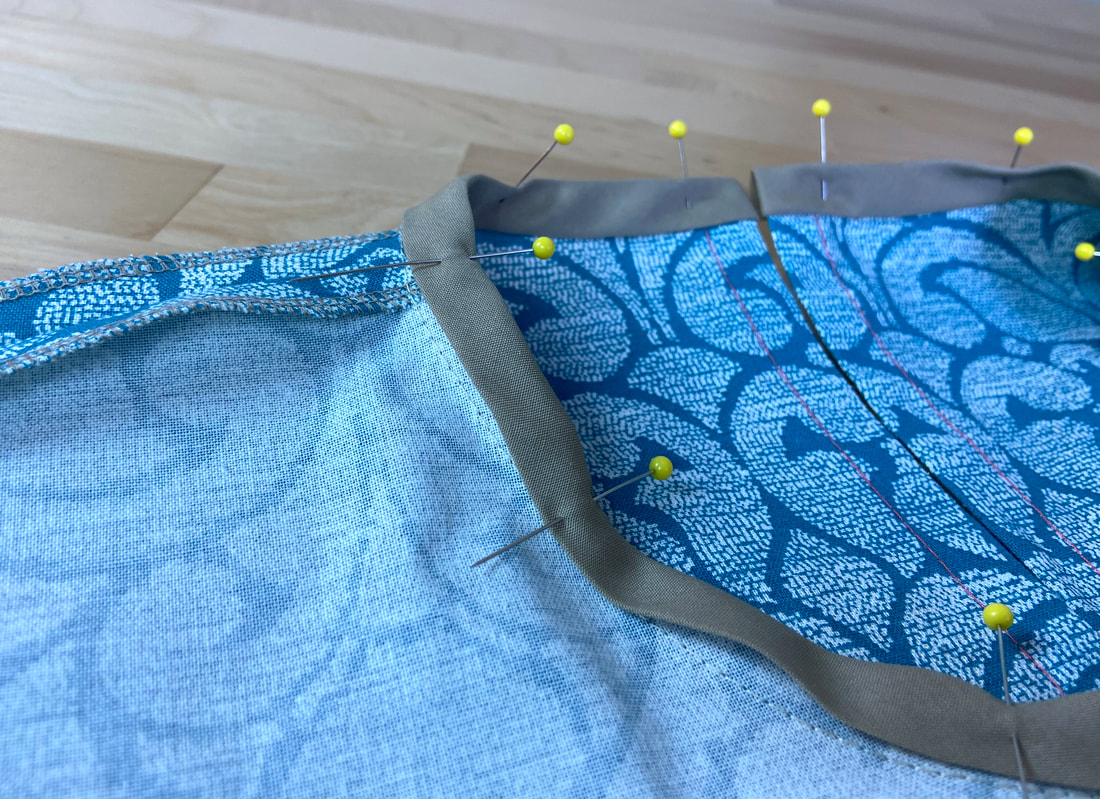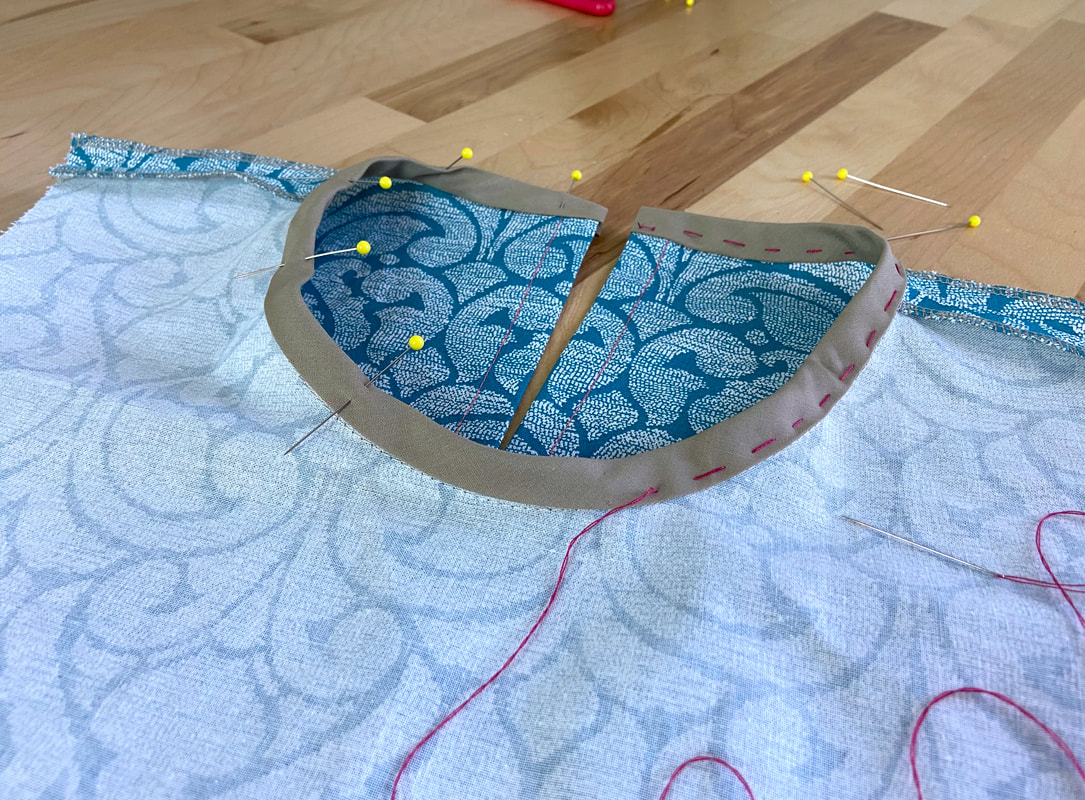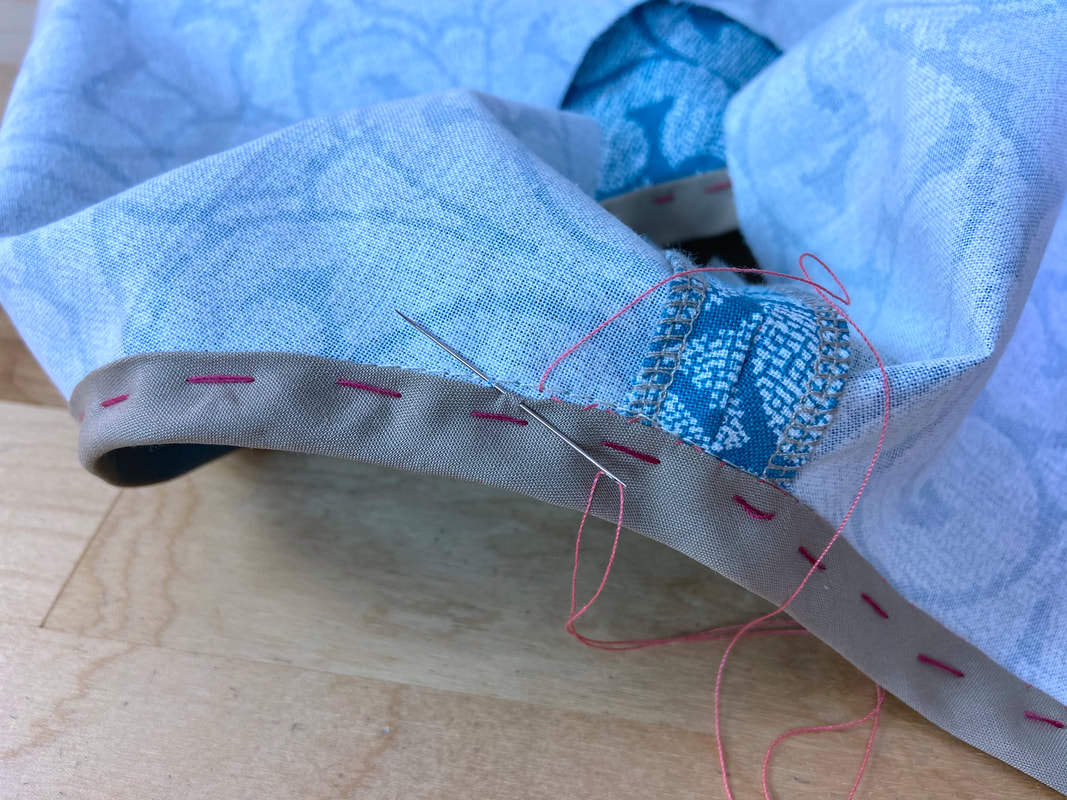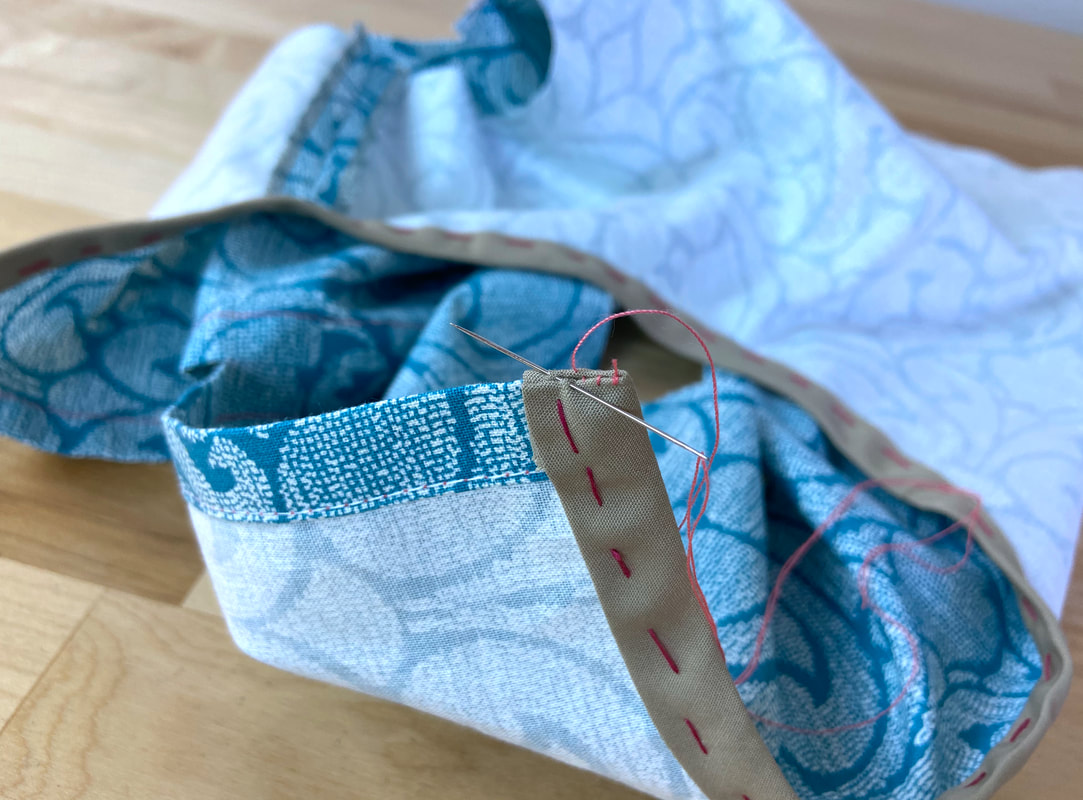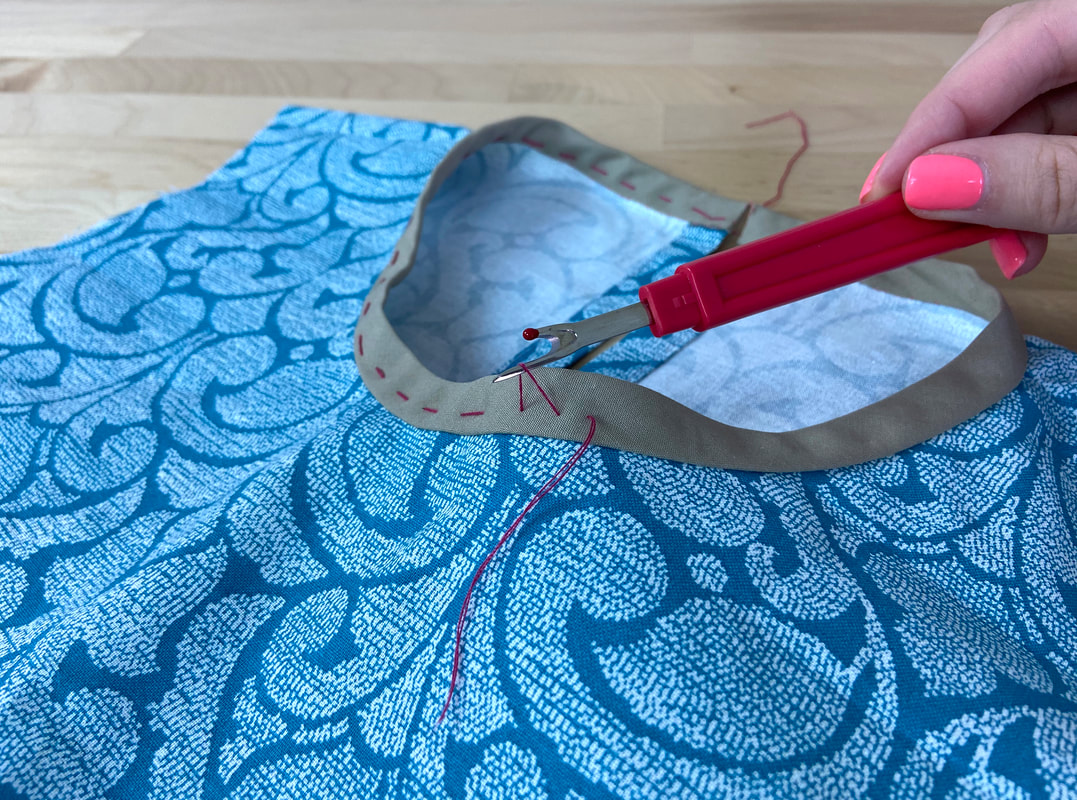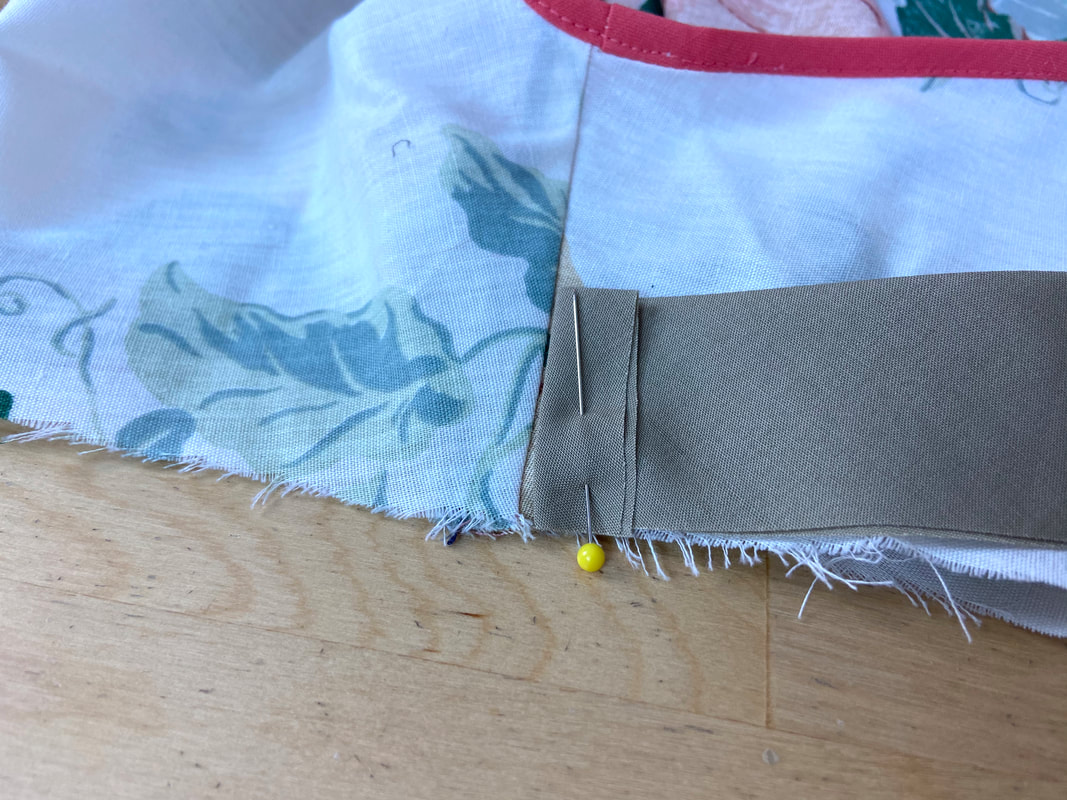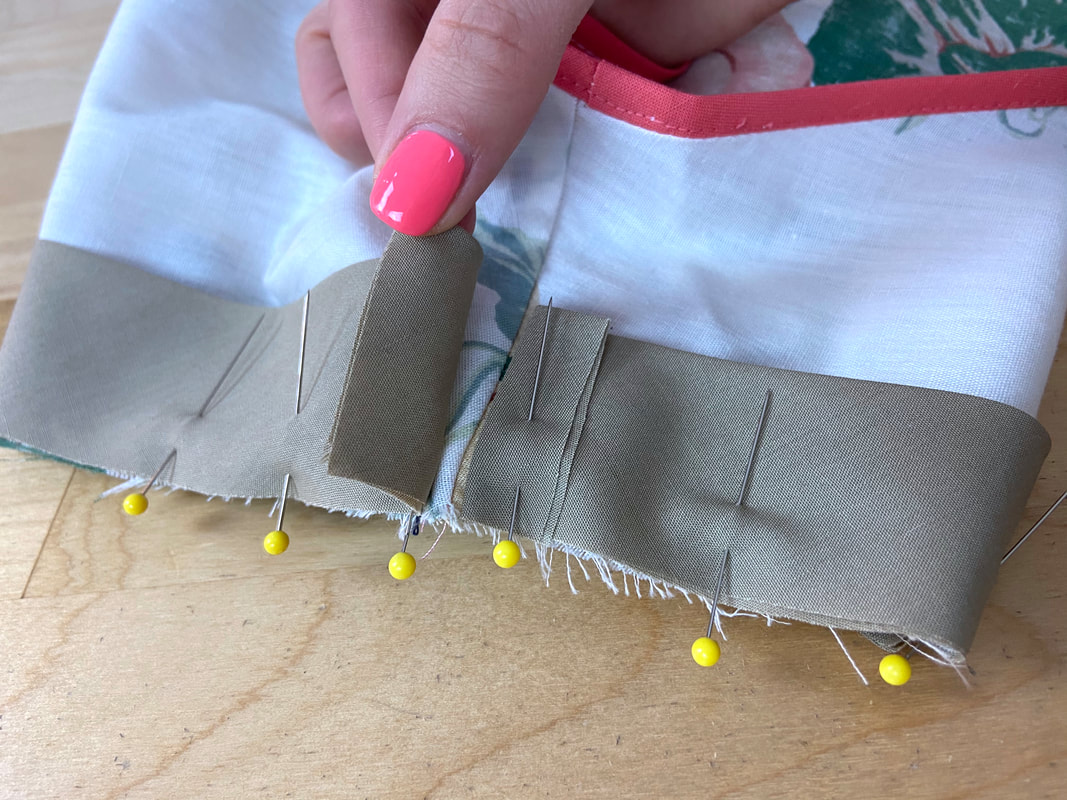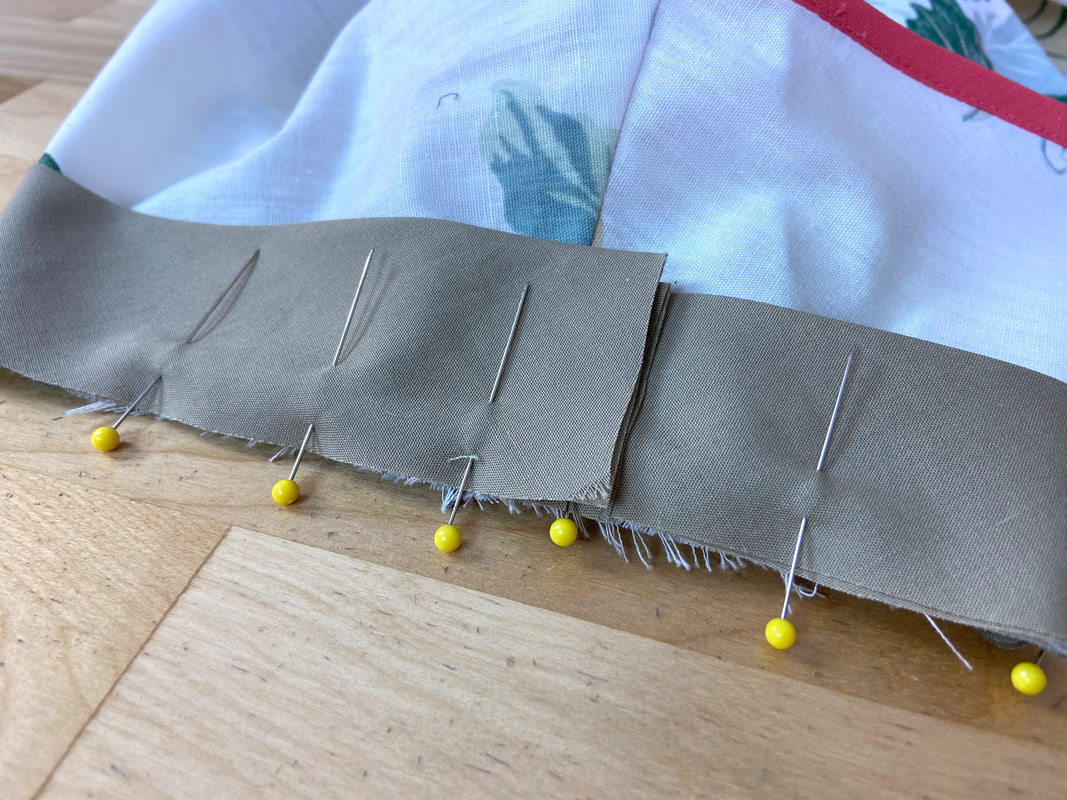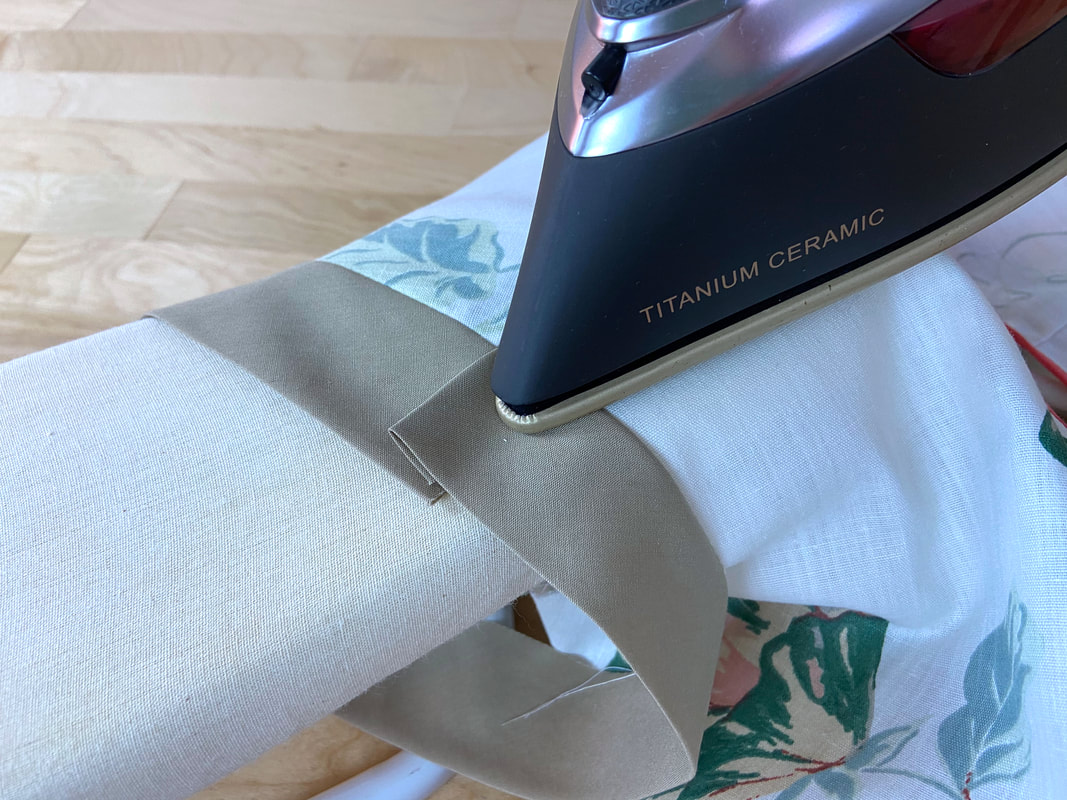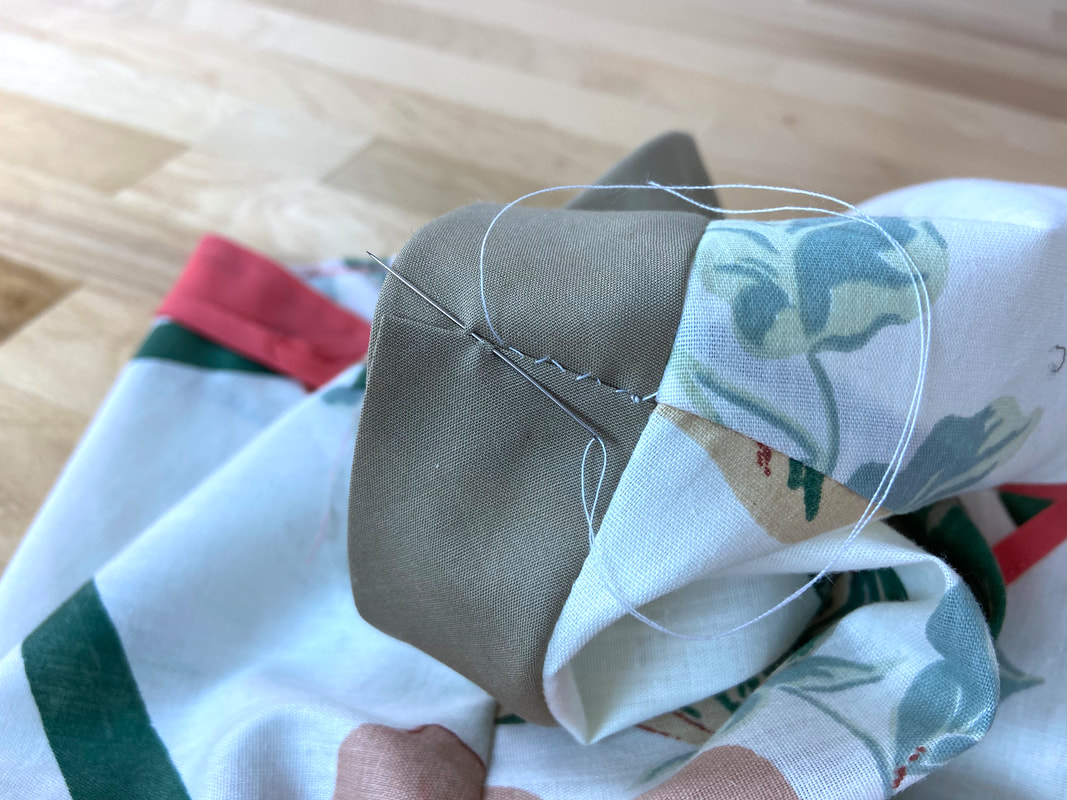What Is Double Layer Binding
A double layer biding is sewn very similar to a single layer style but requires less folding in the sewing process. As a beginner, you may find this version simpler and perhaps more enjoyable to work with.
A double layer binding is great for an exposed bound neckline and can withstand larger widths often resembling a mini neckline band. A finished double layer binding can measure up to 1”- it is not recommended that you go above this width or the finished binding will not lay flat and lose its ability to mold along the neckline’s curved edge.
The doubled binding is cut as a bias fabric strip and folded once down the center before being stitched to the neck edge. The width of the initial fabric strip is six (6) times that of the finished binding. If you recall, in a single layer binding application, the bias strip is cut at only four (4) times the final binding width.
Finishing A Neckline Edge With Double Layer Binding: With Opening
Start by determining the width of the finished binding.
In this example, the final binding is ½” in width. To determine the initial width of the bias fabric strip, multiply the desired binding width by 6. In this case ½” x 6 is 3".
1. Lay your fabric flat on the table with the wrong side facing up. Draw a line on the bias using tailors chalk and a ruler.
2. Using the ruler (a clear plastic ruler like the one used in this tutorial is highly recommended), measure and draw another parallel line at a 3-inch distance from the first one. If extra bias strips are needed, continue drawing identical parallel lines until the individual portions will cover the length needed for your neckline application.
To sew bias strips together into one continuous piece, follow the steps in this tutorial: How To Sew Continuous Bias Binding
3. Carefully cut the 3” bias strip(s). If needed, sew multiple strips together to achieve the desired length. Always allow yourself about 2”-3” of excess in the final length.
To determine how long the bias strip needs to be to cover your neckline, measure along its edge using a flexible measuring tape and add 3” to this measurement.
4. Fold the bias binding layer with fabric wrong sides touching and iron the fold to secure the fold line.
If the garment has an opening that extends into the neckline:
5. Leaving about 1/2” excess at the end of the binding, align the folded bias strip to the neckline such that the binding's two cut edges and the neckline edge align.
6. Continue matching the folded bias strip to the neckline inserting pins horizontally as you go (the ball point should correspond to the outside).
7. Align and pin until you arrive at the other garment opening end. Leave another 1/2” of excess and trim the rest of the binding off.
8. For added stability, hand baste the binding and garment layers together prior to machine stitching.
9. To machine stitch, start on one end of the garment opening, and carefully stitch at the designated seam allowance, ½” in this case, until you arrive at the other garment opening edge. Carefully backstitch both at the beginning and end of the stitch.
10. Once fully stitched, remove the hand basting.
11. Trim the seam allowance diagonally at each corner as shown. When trimming the corners, don’t get too close to the actual stitching.
12. To minimize bulk, trim the seam allowance down to ¼”.
13. Keeping the binding and all seam allowance away from the garment, press the neckline seam carefully to secure the binding in this position.
14. Next, fold the binding ends in at each garment opening, such that these vertical folds are perfectly in line with the garment's opening edge as shown. Iron at each end to crease the folds.
15. Fold the binding one more time towards the inside of the garment such that this folded edge now aligns with the existing stitch on the inside of the neckline as shown. All seam allowance edges should now be enclosed on the inside of this final fold.
Continue ironing and inserting pins as you go to secure the top fold line. Start at one end of the garment opening and finish at the other.
16. If needed, hand baste the folded binding for added stability during the stitching process.
17. To complete, slipstitch the inner fold of the binding to the garment surface, right next to the neckline stitching. No hand stitching should be visible on the face of the garment.
Not sure how to slipstitch? Here is a detailed, step-by-step tutorial: Hand-Applied Blind Stitches
Slipstitch the vertical folds at each corner. Once complete, remove all hand basting stitches.
Finishing A Neckline Edge With Double Layer Binding: No Opening
If applying double layer binding to a closed neckline (garment opening does not extend into neckline), here is how to handle the binding ends:
1. When aligning and pinning the binding to the neckline edge, fold the binding end in at about ½”. Continue pinning the binding to the neckline as described above.
2. When arriving at the initial fold, overlap the other end of the binding by about ½” and trim the remainder off.
3. After the binding is stitched to the neckline, iron the binding layer seam allowances pointing away from the garment.
4. The folded end of the binding will now overlap the unfolded end. To secure, slipstitch this folded edge to the binding layer underneath.
At this point, repeat the folding, ironing and slipstitching steps described above to complete the double layer binding application.

